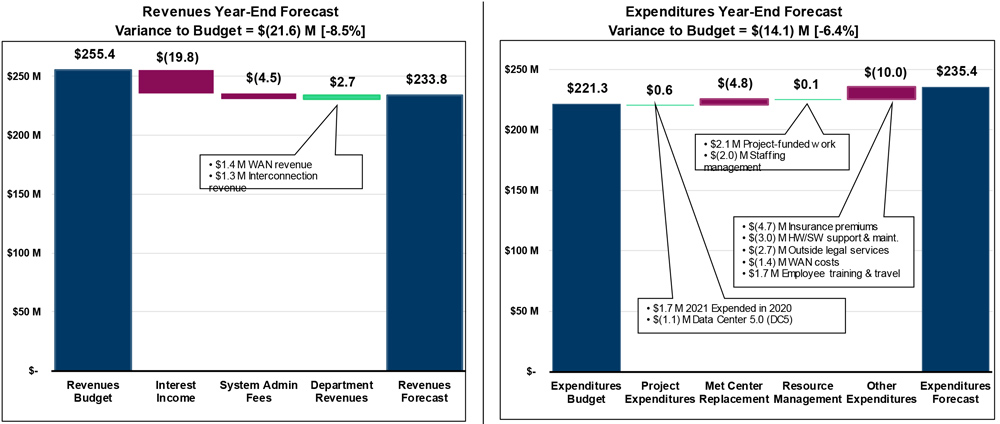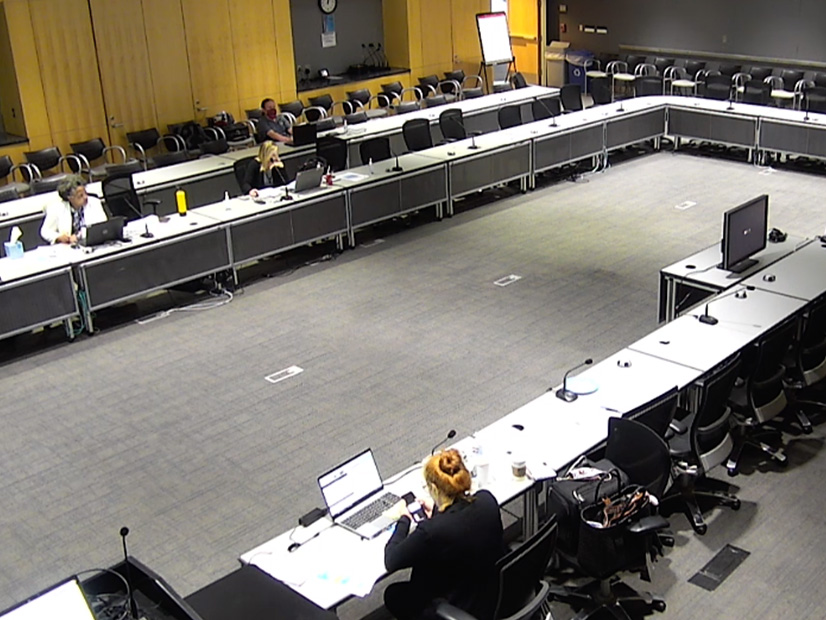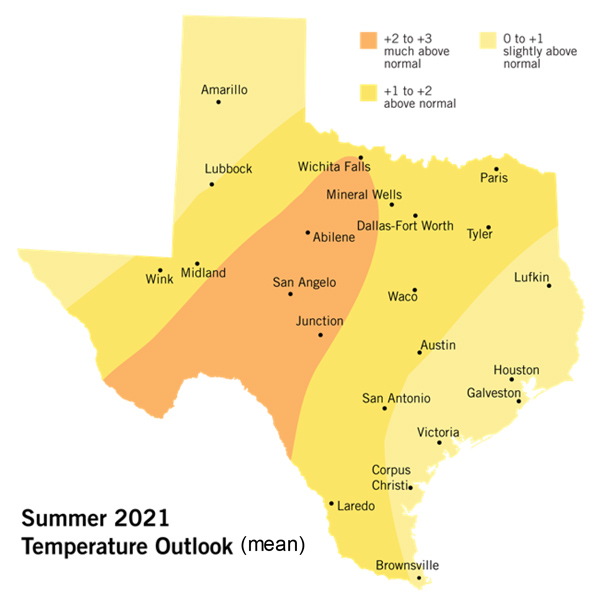Interim CEO Brad Jones this week offered ERCOT’s Board of Directors a sneak peek of his 100-day strategic plan, which he said will be rolled out publicly later this month.
The plan consists of three elements designed to reinforce confidence in the grid operator’s ability to operate reliably and effectively, following February’s near-collapse during arctic conditions. Jones said he had been holding onto the plan until the Texas Legislature completed its session and passed its grid-related bills.
“Rest assured a lot of the elements in the plan are being worked on or are already complete,” Jones said during his report to the board Tuesday. “Our goal is to make this the most favored grid in the nation.”
The board meeting was briefly adjourned to allow Jones and Public Utility Commission Chair Peter Lake to attend a signing ceremony for the legislation. (See Abbott Signs Texas Grid Legislation into Law.)
The plan consists of:
-
-
- restoring trust and confidence in ERCOT and returning to stability;
- cooperating and communicating “thoughtfully and purposefully” through multiple channels; and
- evaluating technical processes within ERCOT and then innovating through dialogue, technical leadership, engagement and expertise.
-
As an example of the last point, ERCOT recently announced a new flexible work policy it hopes will improve recruiting and retention efforts. Employees will have the option of working at either the grid operator’s facilities, from home anywhere in Texas, or a combination of both. Operators and other staff required to be on-site will continue to report to their offices.
Jones said almost half the staff indicated a desire to spend at least a few days in the office, and he said stay-at-home policies during the pandemic allowed ERCOT “to work through security issues.”
“We’ve been working remotely for a little over a year,” he said. “We’re now just stabilizing that with policies.”
Jones said ERCOT faces pressures on its revenues, which are down 8.5% ($21.6 million) primarily because of a $19.8 million shortfall in interest income. The grid operator’s 2020-2021 budget was approved more than two years ago, before interest rates were pummeled by the COVID-19 pandemic.
The system administrative fee is off another $4.5 million because less load is being served. With expenditures more than $14 million over budget, ERCOT is looking at a negative net available year-end variance of $35.7 million.
2021 to be Hot, but not as Hot
ERCOT meteorologist Chris Coleman assured directors that the grid is unlikely to see a repeat of 2011’s long, hot and dry summer.
“Every year since I’ve been here, I’ve been asked, ‘Are we going to have another 2011?’” said Coleman, who joined the grid operator in 2012.
As happened 10 years ago, an intense La Niña led to a relatively mild and dry winter — with the exception of extreme winter weather in February that led to grid emergencies. Those events were the two coldest periods this century, Coleman said.
The difference this year is that while the spring of 2011 was the hottest and driest on record, dating back to 1895, this year’s spring has seen sometimes record-breaking rainfall in much of the state, “almost completely the opposite of 2011,” Coleman said.
ERCOT’s weatherman is expecting slightly warmer temperatures for the state this summer. | ERCOT
“I had increasing concerns the similarities would carry over into the summer. Any summer, especially in Texas, is enhanced when the ground is dry,” he said. “Right now, a majority of the state is moist and has green grass. It’s very likely the ingredients for 2021 are not there to surpass 2011.”
Coleman expects this summer to rank between the 15th and 35th hottest summers. He said portions of West Texas show the highest potential for a hotter-than-normal summer, with Dallas expected to record more 100-degree days than the state’s other large cities.
ERCOT is expecting a record peak this summer but has said it has more than enough capacity to meet demand. (See ERCOT Resource Adequacy Hard Sell After Winter Storm.)
With the past decade being the warmest in history, Coleman said, “that raises the bar for what is above normal in Texas.”
With sea temperatures running above normal over most of the Atlantic Basin, Coleman said, the hurricane season is expected to be among the most active. Forecasters project 18 named storms and eight hurricanes this year, with five listed as Category 3 or greater. Coleman warned directors they could be watching a storm in the Gulf of Mexico next week.
Staff Confronts Credit Issues
Kenan Ögelman, ERCOT vice president of commercial operations, said the market has reduced its short pays by about $30 million as of May 27, leaving an aggregate total of $2.991 billion.
ERCOT has seen an increase in ongoing non-payment of invoices from active market participants and less funds from participants on payment plans, he said. Applications of payments from short-paying market participants has also dropped.

ERCOT is facing a $35 million negative variance this year. | ERCOT
“Entities that stay in the market fall into two categories,” Ögelman said. “There are the ones that have nowhere to go, and the others are those that have agreed to stay on payment plans. As long as they meet the requirements of the payment plan, they are allowed to participate in the market.”
Staff are waiting to see what comes out of several securitization bills that passed the legislature. Customer-financed bonds will be issued to pay back billions in energy costs over 20- to 30-year periods. (See Securitization Offers Texas a Way Forward.)
“It’s critical to wait and see and follow the lead of the commission and other entities that have governance over the implementation of the bills before we decide to do anything,” Ögelman said.
Securitization will at least delay the need to uplift the market’s debt to all participants. Under ERCOT protocols, default invoice amounts are capped at a monthly total of $2.5 million, which would take almost a century to complete.
“With securitization, we would pay back short pays faster than the uplift process,” Ögelman said.
Fitch Ratings said Tuesday the coming months will be critical for the Texas grid’s public power utilities. The ratings agency in February placed 19 ERCOT-based utilities on negative watches shortly after the winter storm. Fitch has downgraded five and affirmed five so far and said it expects to resolve the negative watch on the remaining utilities and electric cooperatives by summer’s end.
“Increased pressure on operating costs is likely for ERCOT utilities as storm costs, winterization investment and market risk premiums are factored into energy prices,” Senior Director Kathy Masterson said in a release. “Downgrades are still possible for some ERCOT utilities if any plan approved by a city council or board of directors fails to recover costs on a timely basis, moderate effects on leverage or preserve liquidity.”
LP&L Transfer ‘Without a Hitch’
Jones told the board that the transfer from SPP of 70% of Lubbock Power & Light’s load, about 470 MW, “went off without a hitch” over the Memorial Day weekend. He complimented LP&L, Oncor and ERCOT staff for working “very closely together” in successfully completing the largest single transfer of customers in the grid operator’s history. (See Six Years in the Making: LP&L Migrates Load to ERCOT.)
“We’re very happy to have Lubbock join the rest of the republic,” said Jones, a West Texan. It was a reference to the Republic of Texas, a sovereign state that preceded the state’s entry into the U.S. in 1846.
Next up: migrating the remaining 30% of Lubbock’s load into ERCOT. Lubbock officials have approved terminating a contract with Southwestern Public Service for the remaining customers, setting up their possible move to the Texas grid by the summer of 2023.
“We’re very encouraged by that,” Jones said.
Tamby, Hobbs Earn Promotions
The directors ratified two promotions involving ERCOT’s leadership: Chief Administrative Officer Jeyant Tamby will serve as Jones’ chief of staff, and Kristi Hobbs was elevated to vice president of corporate strategy and Public Utility Commission relations.
Hobbs, who previously served as director of enterprise risk management and strategic analysis, will be responsible for strengthening the collaboration between the grid operator and the PUC, in addition to her current responsibilities, as well as project and portfolio management, business continuity planning, market rules development and the stakeholder process.
Following a marathon executive session that ended at 6:04 p.m. on Tuesday, the board also voted to approve hiring a search firm to find a permanent CEO.
ESR Measure Approved
In a one-off vote, the board approved an urgent nodal protocol revision request (NPRR1075) that allows energy storage resources (ESRs) to participate in grid reliability this summer.
The NPRR allows ESRs to update their high sustained limit (HSL) and/or maximum power consumption (MPC) in real time to maintain sufficient energy to meet an ancillary service resource responsibility. The carveout for ESRs will expire when either real-time co-optimization goes online or a mitigated offer cap for ESRs is implemented.
Gerdau Steel’s Sam Harper, representing industrial consumers, cast the lone vote against the measure on behalf of two of his segment members, who opposed it during the Technical Advisory Committee’s meeting in May. The industrials wanted to see more analysis and discussion before making the change.
The directors unanimously approved five other NPRRs previously endorsed by the TAC along with an other binding document revision (OBDRR) and single changes to the load profiling (LPGRR), nodal operating (NOGRR), planning (PGRR) and retail market (RMGRR) guides:
-
-
-
- NPRR979: incorporates the OBDs’ “state estimator standards” and “telemetry standards” into the protocols.
- NPRR1062: changes the metering requirement for premises connected at transmission voltage and/or with a peak demand greater than 700 kW/700 kVA from an interval data recorder (IDR) meter to one that also includes advanced meters. The change also eliminates the IDR meter requirement report.
- NPRR1064: conforms ERCOT’s as-built systems protocol language with respect to the evaluation and reporting of chronic congestion. The revision also clarifies the grid operator’s expectations and processes for the verification of modeling information for elements included in the chronic-congestion report.
- NPRR1071: modifies the threshold for retail electric providers’ (REPs) participation in the annual survey of aggregate customer counts from 95% to 98%; the timing requirement for REPs to provide information to ERCOT regarding demand response deployments from Oct. 15 to Oct. 31; and the posting date for the final report from Dec. 15 to Dec. 31.
- NPRR1074: changes the definition of “mp” in the credit default allocation calculations substituting “existing” for “non-defaulting.”
- LPGRR068: adds two new PROFILETYPECODEs for use on premises billed on a four-coincident peak (4-CP) where transmission and/or distribution service providers can support a 4-CP billing rate with an advanced metering system profile: BUSLRG will be for premises without distributed generation and BUSLRGDG for those with DG. The existing BUSIDRRQ will remain an option for premises billed on a 4-CP tariff.
- NOGRR199: realigns references to state estimator and relevant telemetry standards with their move from OBDs to the protocols.
- OBDRR029: modifies the Demand Response Data Definitions and Technical Specifications OBDRR’s Excel templates in Appendix B (NOIE Submission File Template) and Appendix C (REP Event File Template) to clarify that electric service identifier numbers are to be provided instead of ESI ID lists. Also combines error descriptions and suggested fixes into a single table.
- PGRR088: includes the financial security amount necessary to fund the interconnection facilities in the monthly generator interconnection status report.
- RMGRR164: removes language from the guide predating the implementation of advanced metering systems (AMS). It defines the business rules and processes to be followed when transitioning a customer from an IDR meter to an AMS profile type.
-
-





